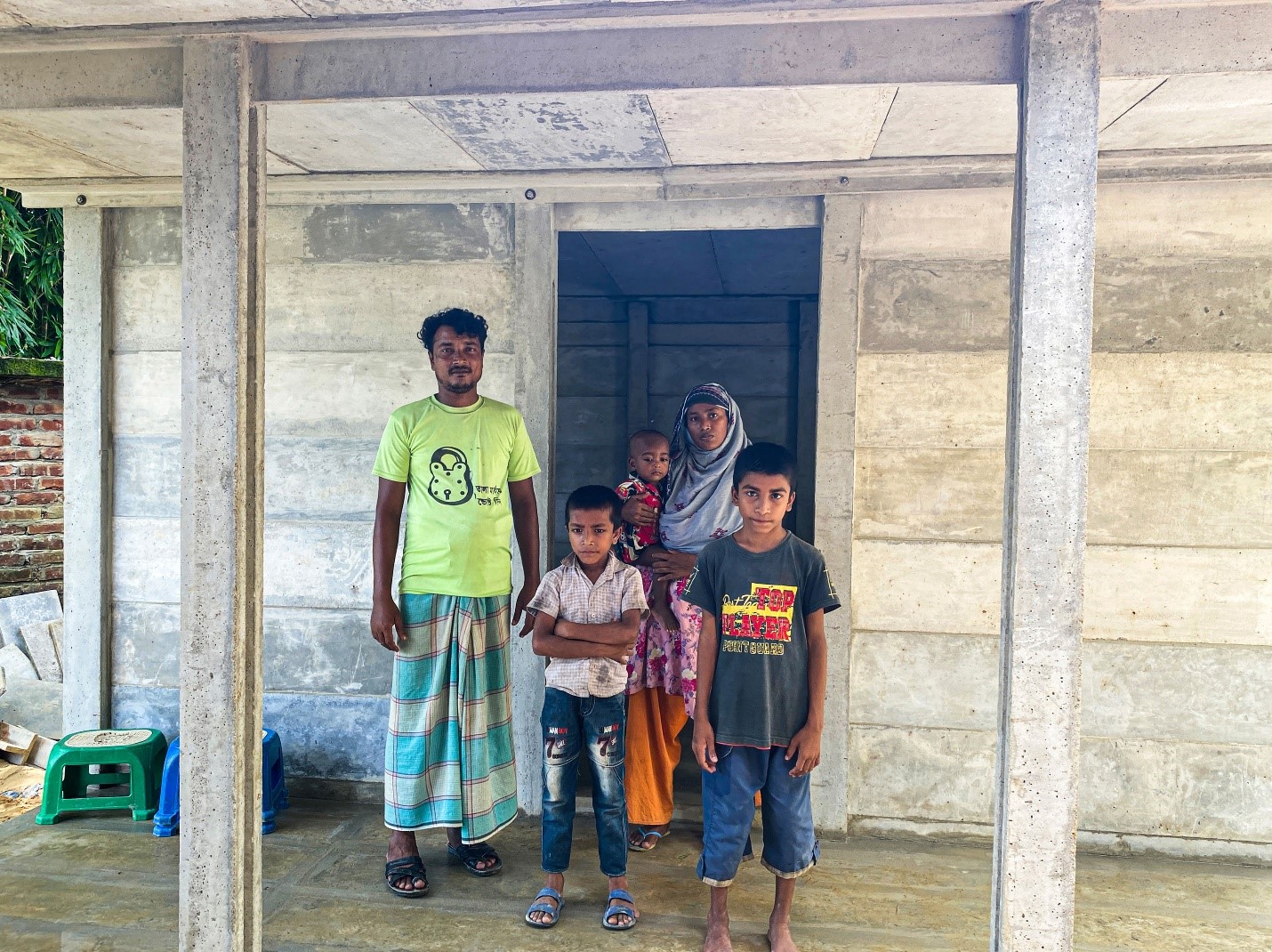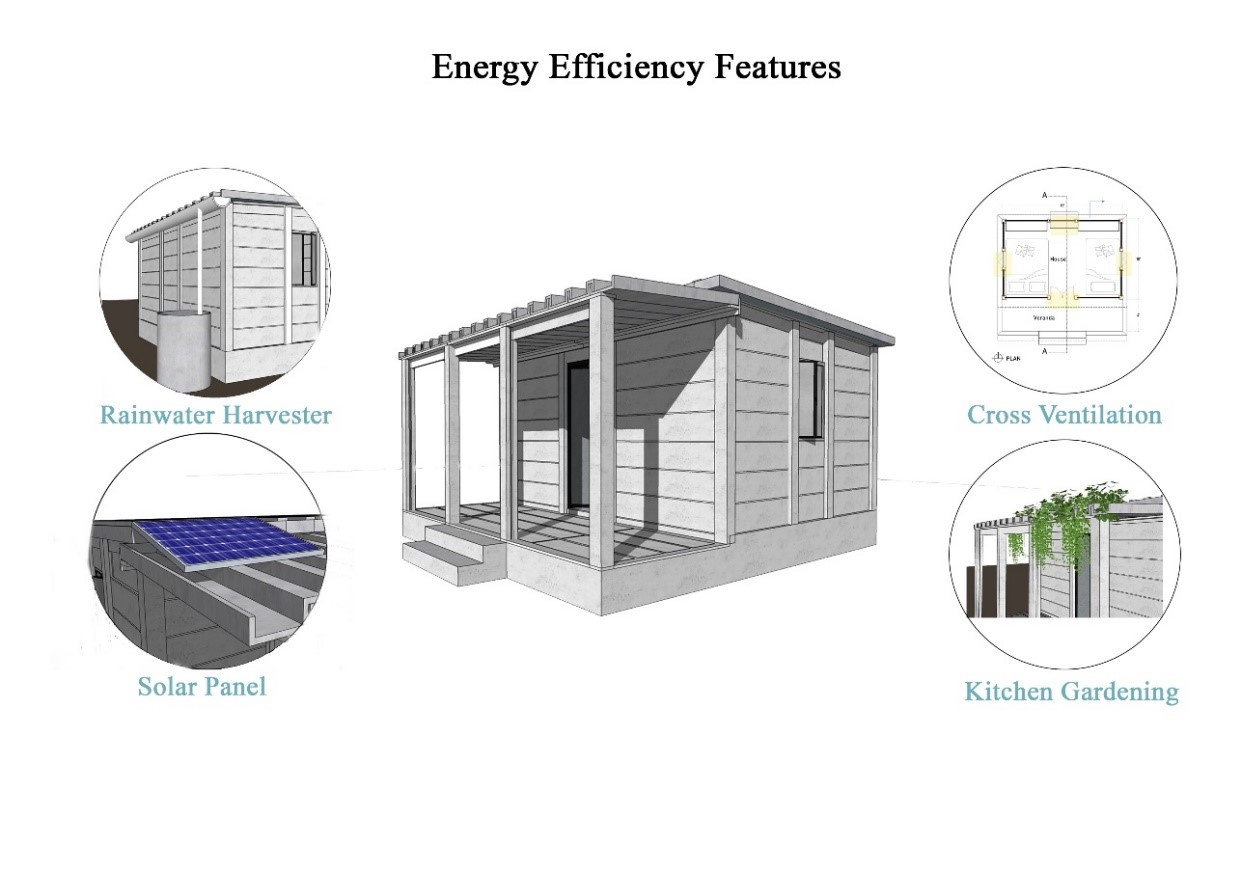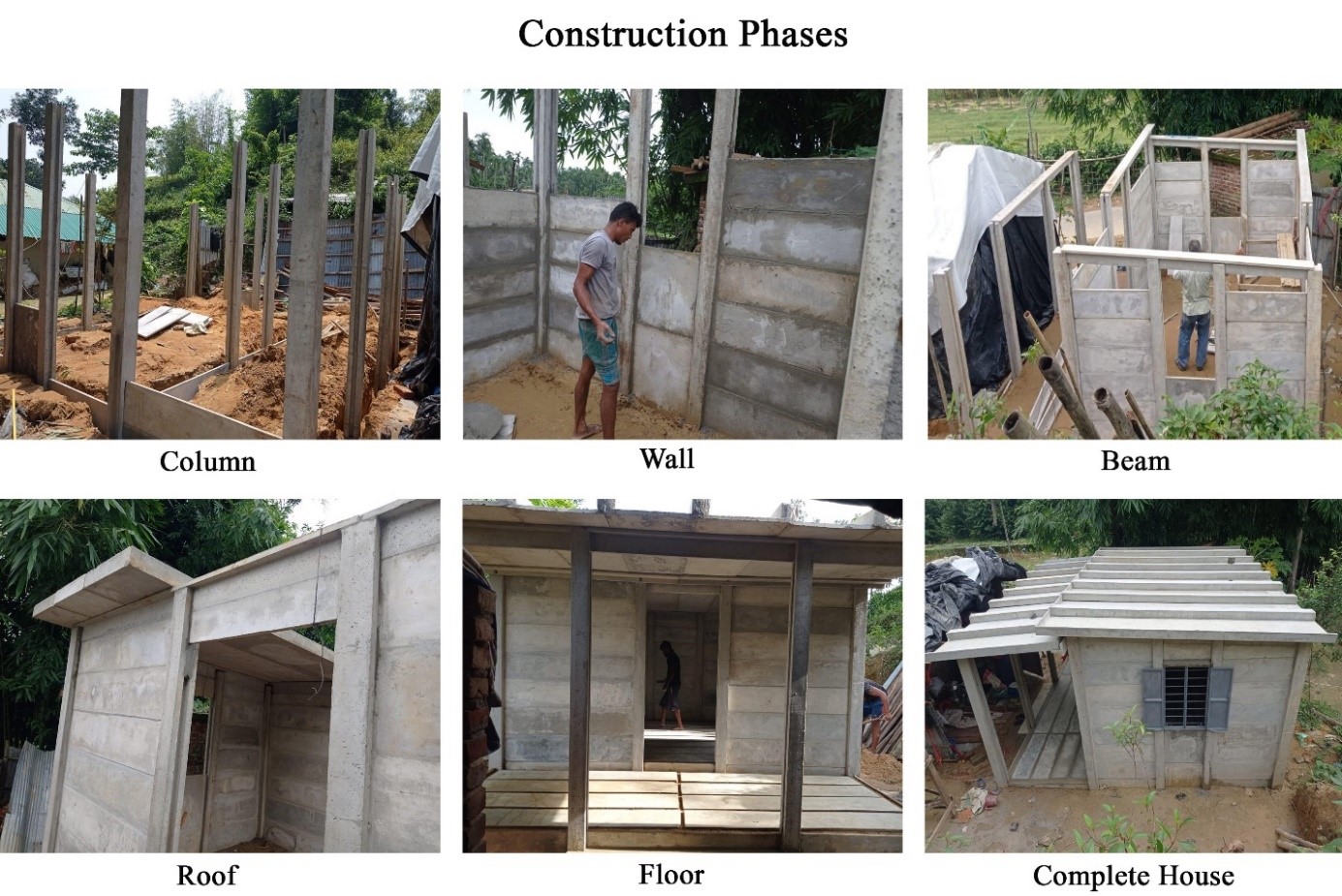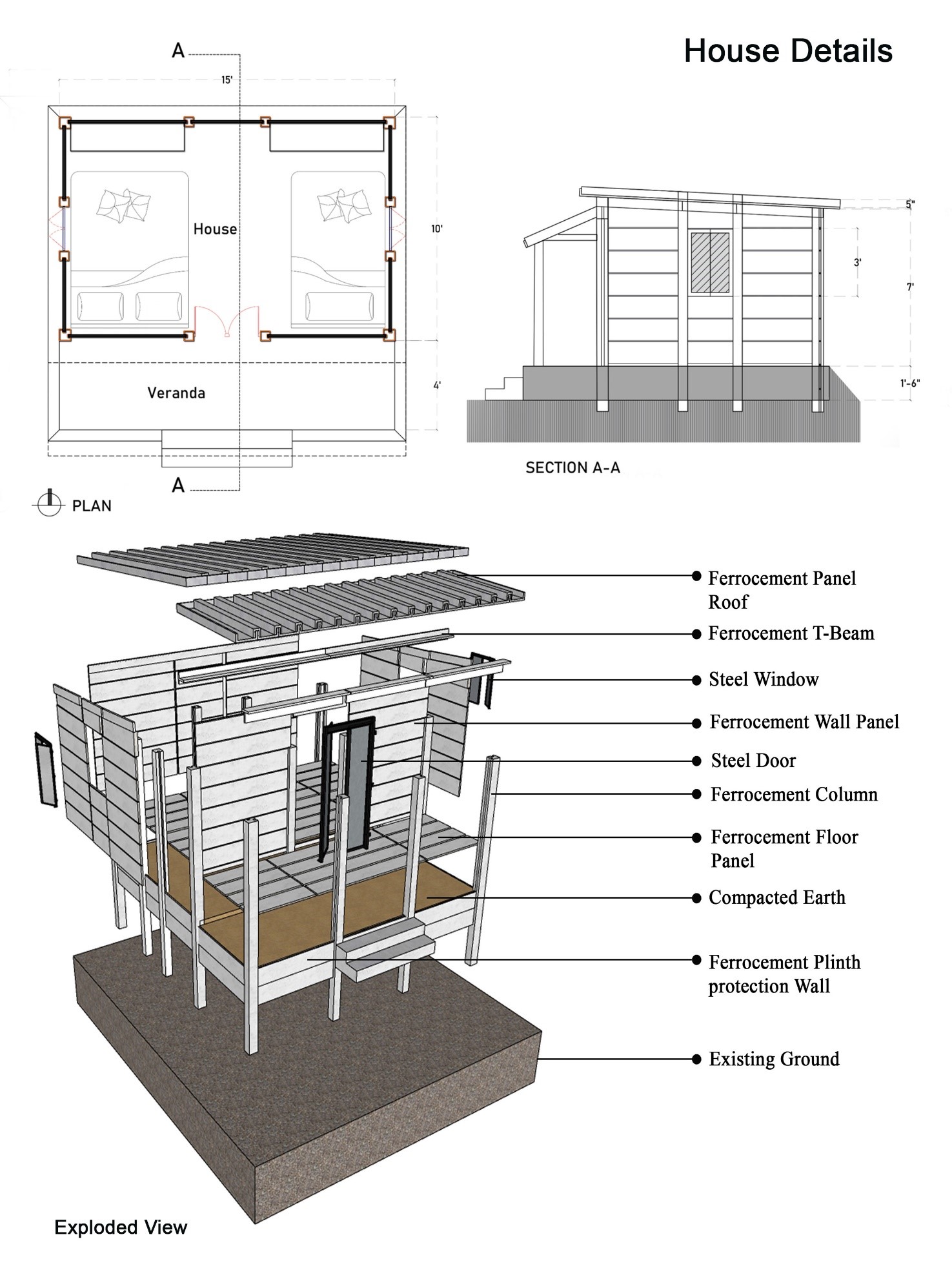
· Type: Emergency Shelter
· Location: Ukhiya, Cox’s Bazar, Bangladesh
· Year: 2023
· Duration: 20 Days
· Architects: Nazia Rahman Urmi
· Engineers: Mohammad Abu Sadeque
· Area: 225 sqft.
· Materials: Ferrocement, Steel
· Cost: 3067 USD
The ongoing humanitarian crisis involving Rohingya refugees in Bangladesh has created a pressing emergency, highlighting the need for a project that can meet not only the critical demand for eco-friendly, hygienic, and resilient emergency shelter, but also assist in filling the national housing gap. Since 2017, over 1 million Rohingya refugees sought shelter in Ukhiya, Cox’s Bazar, creating a rapid urgency of mass housing. The major challenges here were bifold- first,the influx caused extensive deforestation due to the need for emergency shelters, resulting in the cutting down millions of trees and destruction of over 8000 acres of forest land, endangering the ecological environment. Second, such makeshift camp settlements for shelter assistances involved structures containing bamboo, wood, tarpaulin and CGI sheets that are particularly vulnerable to disaster such as cyclone and fire hazard thus need to be rebuilt and renewed repeatedly. There have been frequent occurrences of fire hazard as well that left a great portion of camp destroyed multiple times. This not only makes it challenging for the habitants but also for humanitarian management. Furthermore, national policy to refrain from any permanent structures on the forest land to prevent deforestation, over-extraction of resources and altered land-use makes it inevitable to find alternative shelter solutions
In this context, the need was to find a housing solution that is resilient yet hygienic, portable and durable and has minimum impact on the environment.With all of this in mind, the initiative is prompted by the pressing need to address two major issues faced by the nation.
Firstly, it is propelled by the humanitarian obligation to provide suitable housing for the Rohingya refugee community situated in the susceptible Ukhiya region of Cox’s Bazar.
Secondly, the more extensive national housing problem demands creative approaches to cater to the population’s needs, considering environmental impacts and climatic resilience. Development of portable houses by easy assembly and disassembly facilitate the reuse of building components upon departure of refugees, contributing to the national housing program. Additionally, the project is designed to be capable of withstanding climate challenges and threats. Considering the project’s applicability in regions prone to riverbank erosion, it offers a viable solution for relocating affected communities.



Areas susceptible to environmental vulnerabilities, such as those prone to riverbank erosion, can find solution in this project’s portability, enabling prompt and effective responses to displacement. The utilization of ferrocement technology not only streamlines construction but also lowers expenses. Nations with limited resources can embrace this economical and user-friendly method to for sustainable solutions. Moreover, the tools and facilities needed for producing precast ferrocement elements rely on affordable technology and can be readily manufactured in local workshops.



